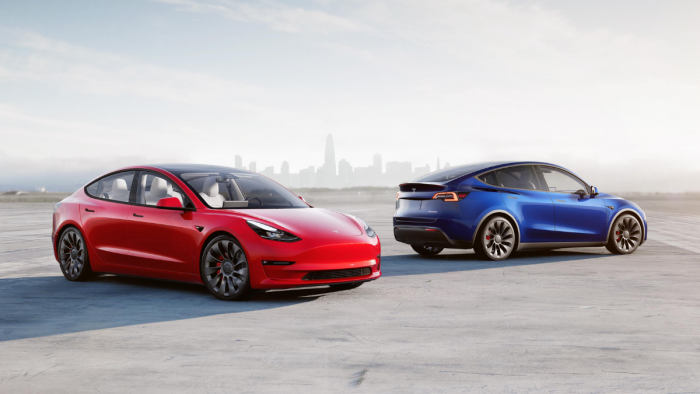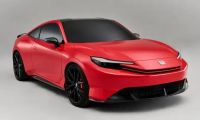The main reason is that these batteries don't depend on the same kind of expensive and hard-to-source raw materials, such as cobalt; up until now other stability issues have held and hindered the technology, right until this breakthrough was announced on communications chemistry journal last February 10th (Pai, R., Singh, A., Tang, M.H. et al. Stabilization of gamma sulfur at room temperature to enable the use of carbonate electrolyte in Li-S batteries. Commun Chem 5, 17 (2022). https://doi.org/10.1038/s42004-022-00626-2).
Engineers at Drexel University have made a breakthrough they say brings these batteries closer to commercial use, by harnessing a rare chemical phase of sulfur to prevent harmful chemical reactions. Lithium-sulfur batteries hold great promise when it comes to energy storage, and not just because sulfur is abundant and less problematics to obtain than cobalt, manganese, and nickel used in today's batteries. Additionally, they can offer a significant performance boost, with the potential to store several times the energy of current lithium-ion batteries.

But there is a problem that scientists keep running into: the formation of chemical compounds called polysulfides: as the battery works, polysulfides basically find their way into the electrolytes - the solution that carries charge between the anode and cathode - where they trigger chemical reactions that compromise the battery's capacity and lifespan. Scientists have succeeded in changing the carbonate electrolyte to an ether electrolyte, which does not react with polysulfides; but this raises other issues, as this extremely flammable ether is highly volatile and contains components with low boiling points, meaning the battery could quickly fail or melt if heated above room temperature.
Chemical engineers at Drexel University have been working on another solution, and this one starts with the design of a new cathode, which can work with carbonate electrolytes already in commercial use. This cathodes are made of carbon nanofibers and had already been shown to slow down the movement of polysulfides in an ether electrolyte. But getting it to work with a carbonate electrolyte required some experimentation. Having a cathode that works with carbonate electrolytes that are already being used means a lot of ground gained for manufacturers; so the goal was to make a cathode that could work within industry's existing lithium-ion electrolyte systems.

Scientists tried to confine the sulfur in the mesh of carbon nanofibers to prevent dangerous chemical reactions using a technique called "vapor disposition". This didn't produce the desired effect, but instead crystallized the sulfur in an unexpected way and turned it into something called gamma-phase monoclinic sulfur, a slightly altered form of the element. This chemical phase of sulfur had only been produced at high temperatures in the laboratory or observed in oil wells up until then. Conveniently for scientists, it is non-reactive with the carbonate electrolyte, thus eliminating the risk of polysulfide formation.
This way they have created a cathode that underwent thousands of charge and discharge cycles with no loss of performance, and a year later, examination shows that the chemical phase has remained the same. The researchers have basically stabilized a rare form of sulfur on a new cathode, paving the way for a new class of high-capacity batteries. The cathode was stable over a year of testing and 4,000 charge-discharge cycles, which the scientists say is equivalent to 10 years of regular use. The prototype battery the team made with this cathode offered three times the capacity of a standard lithium-ion battery, again paving the way for greener batteries that will allow electric vehicles to travel much farther on each charge.
The stabilization of gamma-monoclinic sulfur at room temperature averts irreversible side reactions in lithium sulfur batteries with carbonate electrolytehttps://t.co/zYJ4xB0aV3 pic.twitter.com/LXpeMGqyxS
Advertising — Communications Chemistry (@CommsChem) February 11, 2022
Will this new battery technology be a threat or a reliable ally for Tesla and its Model Y and Model 3? As far as we know, the 4680 cell aims to revolutionize lithium-ion batteries used in electric vehicles. It is 46 millimeters wide and 80 millimeters long and will increase energy density by five times, increase range by sixteen percent, and improve power output by six times. The cell has been in development since 2020, kept behind the doors of the Kato Road facility. Drew Baglino, SVP of Powertrain for Tesla, said that “4680 cells are not a constraint to our 2022 volume plans.” He added that he expects the first vehicles equipping the 4680 cells to be delivered by the end of Q1 2022.

Going back to the new cathode chemistry: “… sulfur has been highly desirable for use in batteries for a number of years because it is earth-abundant and can be collected in a way that is safe and environmentally friendly, and as we have now demonstrated, it also has the potential to improve the performance of batteries in electric vehicles and mobile devices in a commercially viable way,” said Drexel’s Vibha Kalra, PhD, George B. Francis Chair professor in the College’s Department of Chemical and Biological Engineering, who led the research.
“While we are still working to understand the exact mechanism behind the creation of this room-temperature-stable monoclinic sulfur, it is an exciting discovery that could open several doors for the development of more affordable and sustainable battery technology.” Kalra says.
You can check the full academic paper on this links to communications chemistry and drexel.edu
All images courtesy of Tesla Inc.
Nico Caballero is the VP of Finance of Cogency Power, specializing in solar energy. He also holds a Diploma in Electric Cars from Delft University of Technology in the Netherlands, and enjoys doing research about Tesla and EV batteries. He can be reached at @NicoTorqueNews on Twitter. Nico covers Tesla and electric vehicle latest happenings at Torque News.












